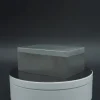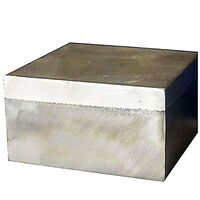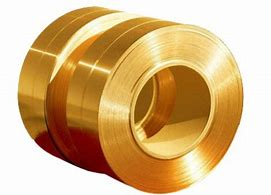1. Introduction
Ever looked at a sleek modern building and wondered, ‘Is that rust… or is it supposed to look like that?’ Chances are, you’re staring at a metal clad facade—specifically, maybe a corten steel siding masterpiece that’s aging like fine wine (or a very expensive nail). Metal clad isn’t just a buzzword tossed around by architects with too much espresso. It’s a legit, versatile, and surprisingly stylish approach to construction, engineering, and even wiring.

In this guide, we’ll unpack the metal clad meaning, explore everything from metal clad roofs to metal clad electrical wire, and answer the burning question: Can you really build a house that looks like a spaceship made of rust? (Spoiler: Yes. And it’s gorgeous.)
2. What Does ‘Metal Clad’ Actually Mean?
Let’s start with the basics. ‘Clad metal meaning’ refers to a composite material where one metal is bonded—mechanically or metallurgically—to another. Think of it like a gourmet sandwich: the bread might be stainless steel, but the filling could be aluminum, copper, or even titanium. The result? You get the best of both worlds: corrosion resistance, strength, conductivity, or cost-efficiency.
Common examples include aluminum clad steel, stainless clad aluminum, and copper nickel clad. These aren’t just fancy lab experiments—they’re used in everything from aerospace to cookware (yes, your All-Clad pan owes its performance to clad metal tech).
3. Metal Clad in Architecture: Where Style Meets Substance
Move over, brick and stucco. Metal clad buildings are having a moment—and for good reason. They’re durable, low-maintenance, and look like they belong in a sci-fi film (in the best way).
Metal clad walls and facades come in many flavors. A corten steel facade develops a protective rust layer that actually prevents further corrosion—making it both functional and dramatically moody. Zinc facade systems offer a sleek, gray-blue sheen that ages gracefully. And copper siding? It starts shiny but evolves into a dreamy green patina over decades.
Popular systems include standing seam siding—especially vertical standing seam metal siding—and corrugated steel facade panels. Brands like PAC CLAD offer colorbond standing seam roofs, PAC CLAD coping, and even PAC CLAD column covers for a fully coordinated look. Want a zinc clad dormer? Go for it. Dreaming of a steel clad house? Architects are already there.

4. Types of Metal Clad Siding and Roofing
Not all metal is created equal—and neither is all cladding. Here’s a quick tour of your options:
- Exterior corrugated metal siding: Rugged, industrial, and surprisingly chic.
- Zinc metal siding and zinc clad roof: Elegant, long-lasting, and naturally antimicrobial.
- Corten steel siding cost may be higher upfront, but its zero-maintenance patina saves money long-term. (Corten siding cost varies by region, but expect premium pricing for that Instagrammable rust.)
- Aluminum clad sheet (or aluminium clad sheet, if you’re feeling British) is lightweight and corrosion-resistant—perfect for coastal homes.
- PAC CLAD HWP and other standing seam systems offer clean lines and excellent weather resistance.
And don’t forget metal weatherboard—a modern twist on traditional wood siding, but with all the perks of metal.
5. Beyond Buildings: Industrial and Electrical Uses of Metal Clad
Metal clad isn’t just for pretty facades. In engineering and manufacturing, clad metals are workhorses. Clad steel might combine a carbon steel core with a stainless steel surface—ideal for chemical tanks or pressure vessels.
Then there’s metal clad wire—like aluminum clad steel wire or cu clad wire—used in telecommunications and power transmission. Metal clad electrical wire (often called MC cable) is armored for safety in commercial buildings, including in Pennsylvania (yes, it’s code-compliant!).
Even insulation gets the treatment: aluminum clad pipe insulation wraps ducts and pipes in reflective, protective layers. And let’s not overlook metal clad insulation for walls and roofs—boosting energy efficiency while looking sharp.

6. Metal Plates, Sheets, and Alloys: The Backbone of Clad Systems
Behind every metal clad wall or roof is a foundation of high-performance materials. Think stainless steel plate, aluminum 6061 T6 plate, or corten steel plate. Need something extra tough? Try chrome carbide overlay plates for mining equipment.
Common plate types include:
- Diamond plate steel (aka checker plate) for slip resistance on stairs and truck beds.
- 316 stainless steel plate for marine environments.
- 1/8 inch steel plate or 3/16 metal plate for structural supports.
- Alloy clad options like 2024 T3 clad or 7075 T6 clad for aerospace applications.
Whether you’re sourcing steel plate for sale or hunting for ‘steel plate near me,’ the variety is staggering—from mild steel plate to inconel 718 plate for jet engines.
7. Why Go Metal Clad?
So why choose metal clad over traditional materials? Let us count the ways:
- Durability: Many systems last 50+ years with minimal upkeep.
- Sustainability: Most metals are recyclable; zinc and copper even improve with age.
- Design flexibility: From perforated plate accents to bold corten steel siding, the aesthetic range is huge.
- Performance: Clad metals combine properties—like the strength of steel with the corrosion resistance of aluminum—that single metals can’t match.
Plus, let’s be honest: a metal clad house just looks cool. Like, ‘architects will stop their cars to take pictures’ cool.
8. Conclusion
Metal clad is more than a trend—it’s a smart, stylish, and surprisingly versatile solution across architecture, engineering, and electrical systems. Whether you’re wrapping a shed in exterior corrugated metal siding, specifying a zinc facade for a downtown high-rise, or running aluminum clad wire through a commercial wall, you’re tapping into a technology that blends form and function like few others.
So next time you see a building with a rust-red wall or a shimmering copper roof, don’t call it ‘old.’ Call it clad—and maybe snap a photo for your mood board.
Our Website founded on October 17, 2012, is a high-tech enterprise committed to the research and development, production, processing, sales and technical services of ceramic relative materials such as What. Our products includes but not limited to Boron Carbide Ceramic Products, Boron Nitride Ceramic Products, Silicon Carbide Ceramic Products, Silicon Nitride Ceramic Products, Zirconium Dioxide Ceramic Products, etc. If you are interested, please feel free to contact us.
